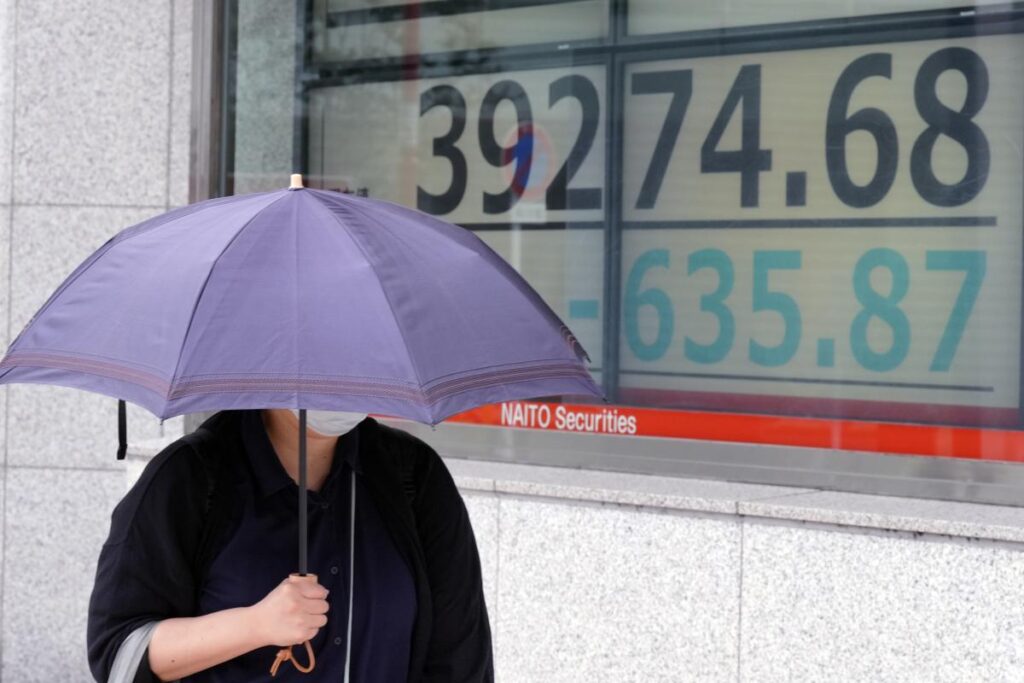On Wednesday, global markets experienced mixed movement as traders reacted to a pullback in U.S. stocks, which had reached record highs just days earlier. This decline was primarily influenced by selling pressure in the technology and energy sectors. European markets showed varied results, with the FTSE 100 in Britain rising by 0.6% to 8,300.26, buoyed by news of a drop in U.K. inflation to 1.7% in September, the lowest rate in over three years. This development has heightened speculation that the Bank of England may consider cutting interest rates at their upcoming policy meeting. In contrast, France’s CAC 40 fell by 0.8% to 7,461.35 and Germany’s DAX shed 0.1% to 19,463.02. Futures for the S&P 500 and Dow Jones also indicate a slight decrease.
In Asia, the trading days were characterized by declines, especially in Japan, where the Nikkei 225 index plunged by 1.8% to 39,180.30. This downturn was led by significant drops in technology shares, particularly after ASML, a major Dutch supplier of chip manufacturing equipment, cautioned about a slower recovery in semiconductor demand outside the artificial intelligence sector. Notably, chip manufacturer Tokyo Electron saw its shares fall by 9.2%, while Lasertec Corp. experienced a drastic 13.4% decline. Other Asian markets saw similar patterns as Australia’s S&P/ASX 200 dipped by 0.4%, and South Korea’s Kospi decreased by 0.9% to 2,610.36. Although Taiwan’s Taiex saw a dip of 1.2%, Chinese stocks largely advanced, with Hong Kong’s Hang Seng adding 0.4% and the Shanghai Composite inching up.
The previously mentioned pullback in U.S. stocks was evident on Wall Street, where the S&P 500 shed 0.8% to close at 5,815.26, a day after reaching an all-time high, marking the 46th time this year. The Dow Jones Industrial Average also fell by 0.8% to 42,740.42, and the Nasdaq composite dropped by 1%. The energy sector particularly bore the brunt of these losses, with Exxon Mobil falling by 3%, partly due to a sharp decline in oil prices. Brent crude dropped below the $75 mark from over $80, driven by concerns over China’s slowing economic growth and weakening demand for oil. Furthermore, eased tensions regarding potential Israeli strikes on Iranian oil facilities added to the market’s volatility as traders assessed risks to oil exports.
Despite the recent declines, early Wednesday trading saw some recovery in oil prices, with benchmark U.S. crude rising by 45 cents to $71.03 per barrel and Brent crude gaining 38 cents to $74.63 per barrel. Among the technology sectors, Nvidia was revealed to be a significant weight on the S&P 500, with its stock falling 4.5%, though it remains up 166.2% for the year due to investor enthusiasm surrounding artificial intelligence. The situation was exacerbated by ASML’s quarterly results, in which its CEO indicated that while AI presents strong growth potential, recovery in other market segments remains sluggish. Reports of potential U.S. restrictions on chip exports added to market anxieties, especially concerning key players like Nvidia and AMD.
Additionally, traders were on alert for an earnings report from Taiwan Semiconductor Manufacturing Corp. (TMSC), which is anticipated to further influence stock performance; TMSC shares saw a decline of 2.3% on Wednesday ahead of this report. In contrast, Wolfspeed, a semiconductor maker, experienced a notable increase of 21.3% after the Biden-Harris administration announced plans for significant direct funding to support the construction of its new silicon carbide factory in North Carolina. Walgreens Boots Alliance also reported a successful quarter, posting a 15.8% increase in shares after surpassing analyst forecasts, although it plans to close approximately 1,200 stores over the next three years to revitalize its U.S. operations.
On the bond market end, trading resumed after a holiday break, and the yields on Treasuries fell following disappointing manufacturing data from New York state. The yield on the 10-year Treasury note decreased to 4.03%, down from 4.10%. Currency exchanges saw slight movements, with the dollar rising slightly to 149.27 Japanese yen, while the euro edged down to $1.0883 from $1.0892. As traders navigate this mixed financial landscape, attention remains fixated on upcoming earnings reports and macroeconomic indicators that could influence market sentiment in the coming days. The volatility across the sectors suggests a cautious approach among investors, particularly given the uncertainties surrounding technology stocks and energy market dynamics.

